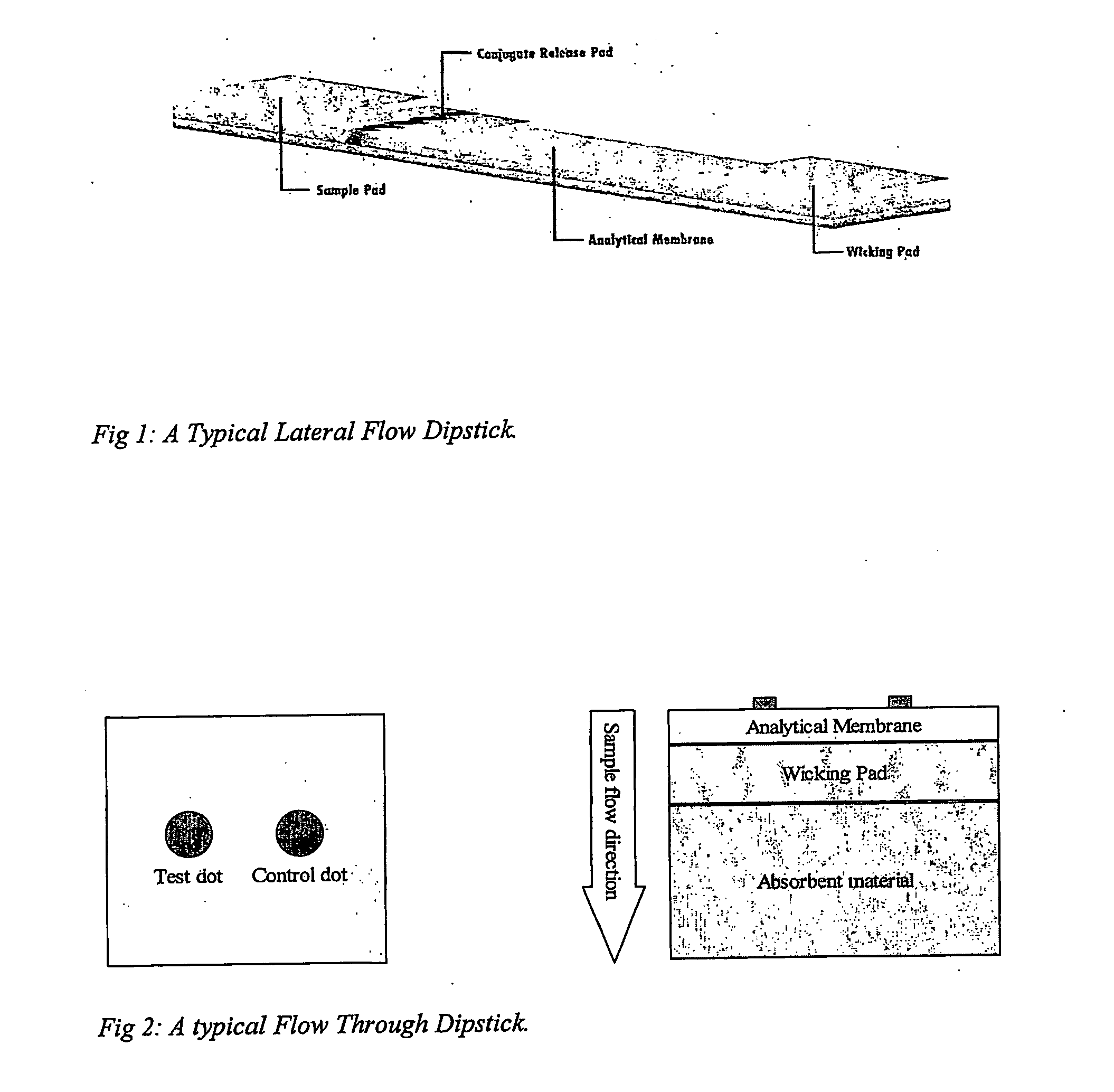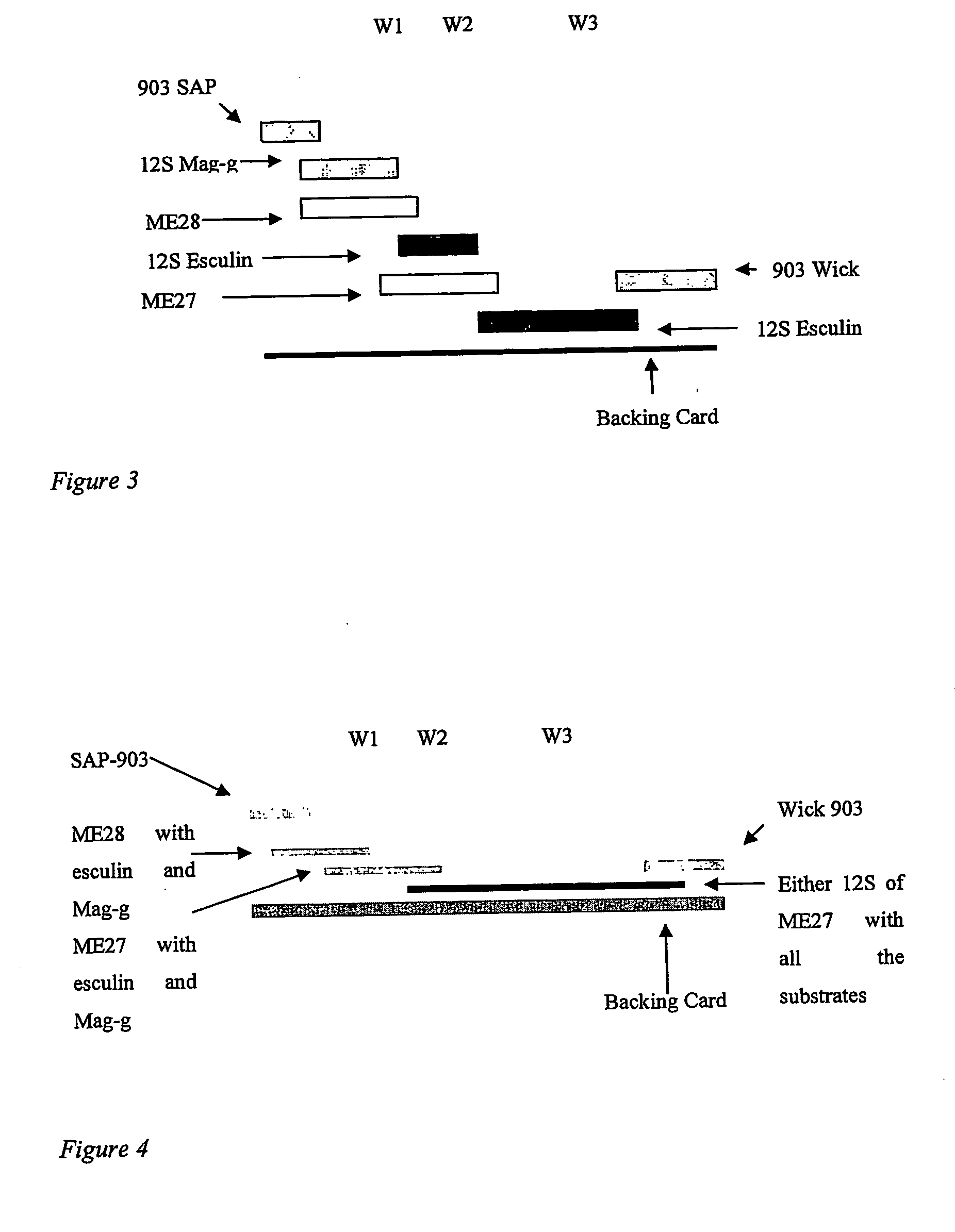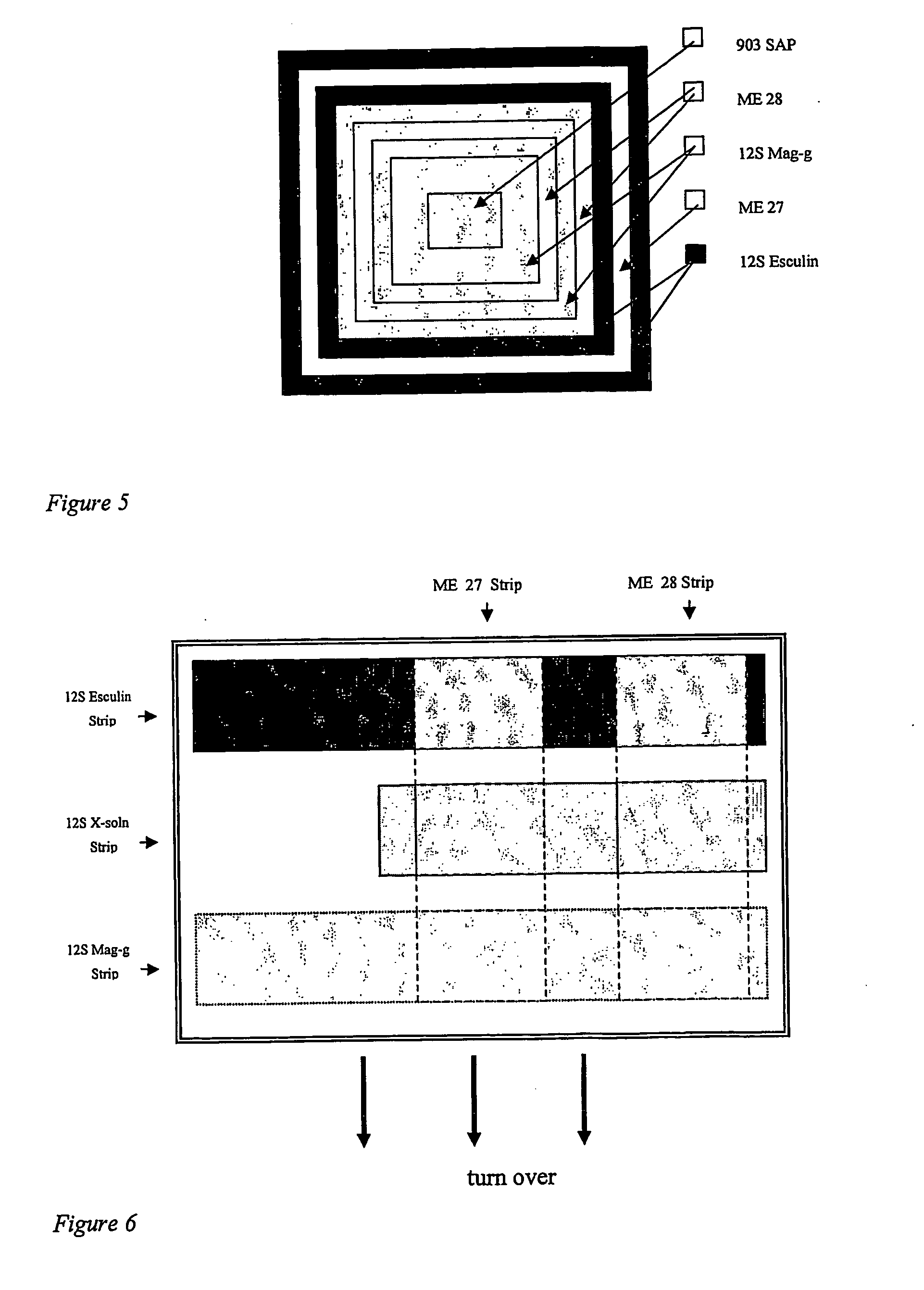Microorganism detector
a microorganism and detector technology, applied in the field of microorganism detection, can solve the problems of false negative results, urine retention problems, and false negative results,
- Summary
- Abstract
- Description
- Claims
- Application Information
AI Technical Summary
Benefits of technology
Problems solved by technology
Method used
Image
Examples
example 1
Preparing an Esculin Membrane.
[0079] A mixture of 0.1 g of esculin and 0.05 g of ferric ammonium citrate is dissolved in 100 ml distilled water. A solution of 0.1 M MgCl2 is prepared by adding 2.033 g of MgCl2 to 100 ml of distilled water. 2 ml of MgCl2 is added to 10 ml of the esculin solution and mixed well. A 903 membrane is placed in a sterile container and the MgCl2 / Esculin solution poured over the membrane. The membrane is allowed to soak for 2-3 hours at room temperature. The membrane is then removed from the solution and placed in a container to dry at 37° C. in a well ventilated area. To allow even drying containers should be semi-closed. Drying may take up to 8 hours depending on conditions.
example 2
Preparing an X-gal+X-glc Membrane
Preparing X-gal Solution
[0080] A mixture of 0.04 g of 5-Bromo-4-Chloro-3-indoyl-beta-D-Galactopyranoside (X-gal) substrate is dissolved in 1 ml of 80% Dimethylformamide (DMF).
PreparingX-glc
[0081] A mixture of 0.02 g of 5-Bromo-4-Chloro-3-Indoxyl-beta-D-Glucuronide and cyclohexylammonium salt substrate is dissolved in 1 ml of 80% DMF.
[0082] Both X-gal and X-glc are added together to 100 ml of distilled water with 1 ml of 100 mM IPTG. The same soaking and drying procedure described in example 1 is applied.
example 3
Preparing Magenta—Glucoside Membrane
[0083] A mixture of 0.02 g Bromo-6-Chloro-3-Indolyl-β-D-Galactopyranoside (Mag-g) is dissolved in 80% DMF, and then added to 100 ml of distilled water. The same soaking and drying procedure described in example 1 is applied.
PUM
| Property | Measurement | Unit |
|---|---|---|
| pore sizes | aaaaa | aaaaa |
| pore sizes | aaaaa | aaaaa |
| pore sizes | aaaaa | aaaaa |
Abstract
Description
Claims
Application Information
 Login to View More
Login to View More - R&D Engineer
- R&D Manager
- IP Professional
- Industry Leading Data Capabilities
- Powerful AI technology
- Patent DNA Extraction
Browse by: Latest US Patents, China's latest patents, Technical Efficacy Thesaurus, Application Domain, Technology Topic, Popular Technical Reports.
© 2024 PatSnap. All rights reserved.Legal|Privacy policy|Modern Slavery Act Transparency Statement|Sitemap|About US| Contact US: help@patsnap.com










